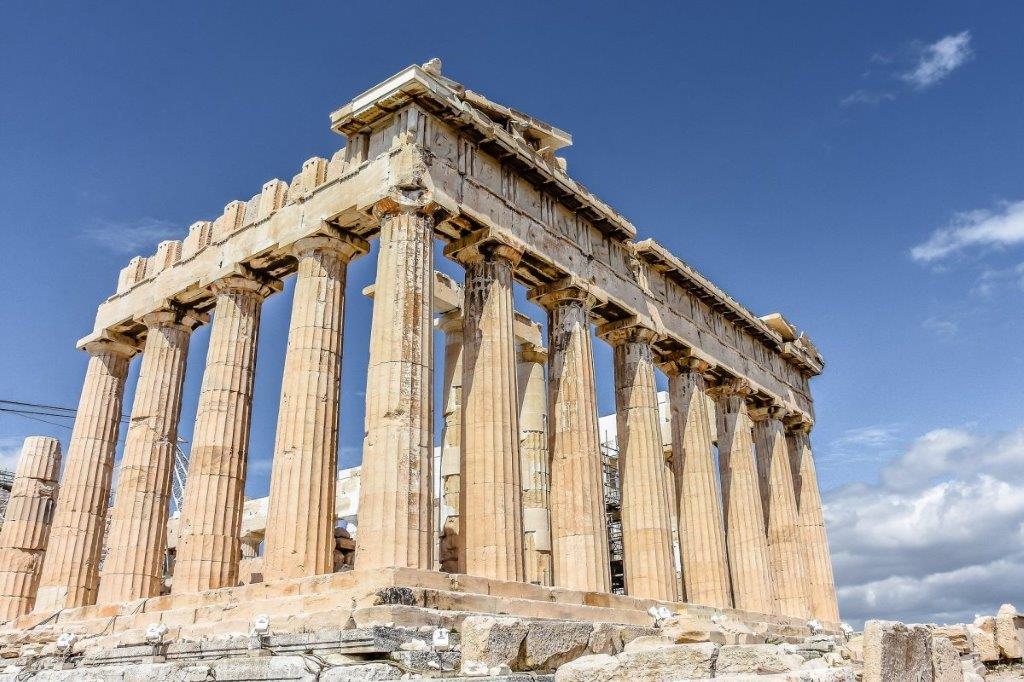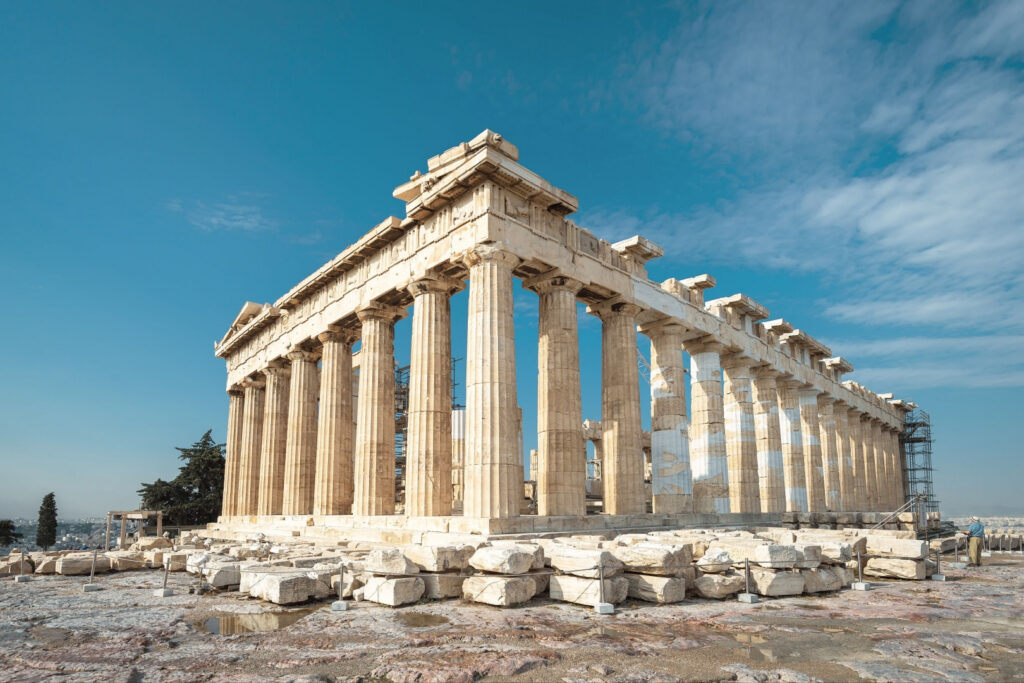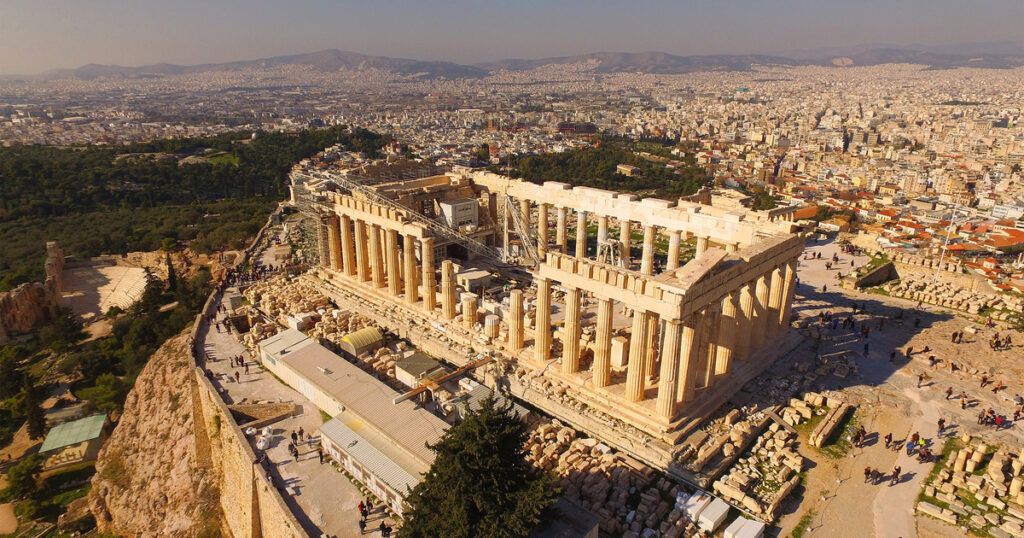
Athenian Acropolis (Gr. Ακρόπολη Αθηνών, from akropolis = upper city) – an acropolis in Athens, located on a limestone hill with a relative height of 70 m (almost 157 m above sea level), inhabited in the Neolithic, in the Mycenaean period there was a palace with a megaron here , from the 6th century BC Athena’s place of worship.
Athenian Acropolis (Gr. Ακρόπολη Αθηνών, from akropolis = upper city) – an acropolis in Athens, located on a limestone hill with a relative height of 70 m (almost 157 m above sea level), inhabited in the Neolithic, in the Mycenaean period there was a palace with a megaron here , from the 6th century BC Athena’s place of worship.
THE HISTORY OF THE TEMPLE
Temples built in the archaic period were destroyed during the Persian wars. During the reconstruction initiated by Pericles, a complex of temples was built here: the Parthenon, the Erechtheion, the Apteros, the sanctuary of Artemis Brauronia and the Propylaea. Destroyed sculptures, elements of older buildings were used to expand the terrace towards the south (they were found during archaeological excavations started in the 1770s, in the so-called “Persian rubble”). Pericles entrusted the reconstruction of the Acropolis to Phidias, and the architects Iktinos, Mnesikles and Callicrates participated in the work.
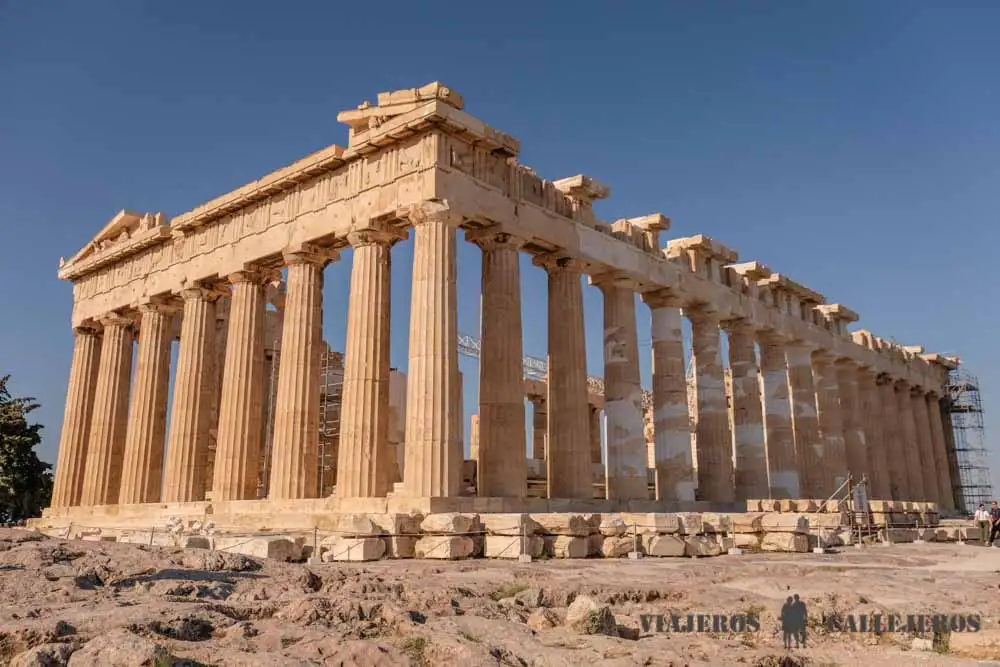
THE ACROPOL HILL
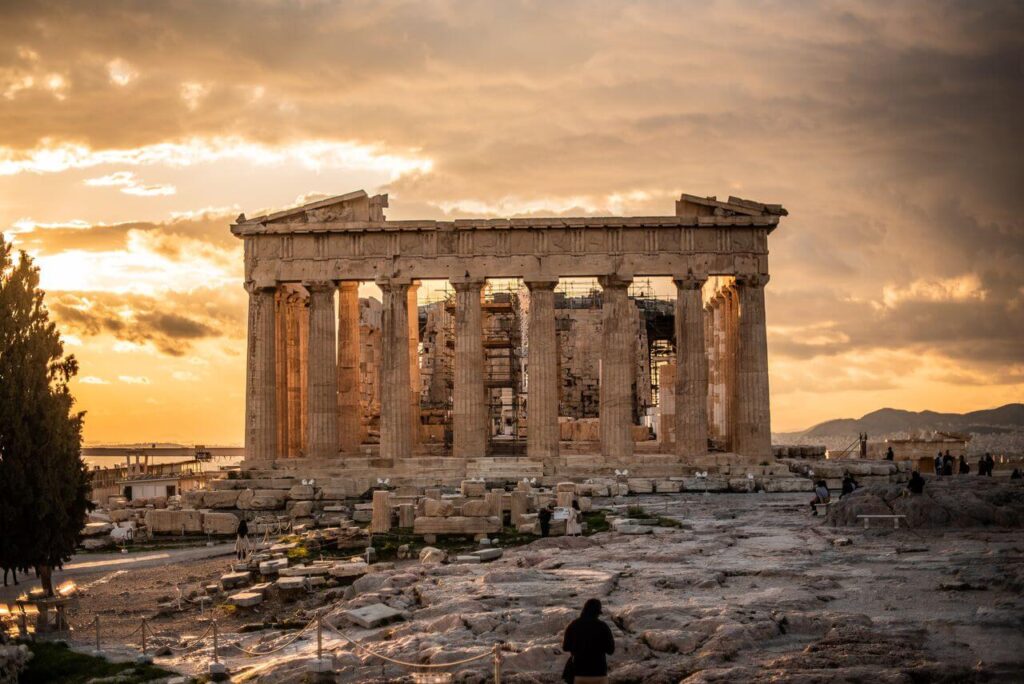
The Acropolis rises to a height of 156.63 meters above sea level. – is not the highest hill in Athens, but relatively easily accessible from the west, with a vast (approx. 270 m long and approx. 156 m wide) peak with an area of approx. m² and access to drinking water. It is built of limestone rocks formed in the Cretaceous period, which lie on a layer of metamorphic shales, sandstones, marls and conglomerates.
In the north-western part there are numerous caves where Zeus, Pan and Apollo were worshipped. The first traces of settlement on the hill come from the Neolithic period (approx. 4500-3000 BC); the remains of pottery vessels from the Early and Middle Bronze Age have also been found near the Erechtheion. Initially, there was probably a settlement, the ruler’s palace and houses of the most important members of the community on the hill.
